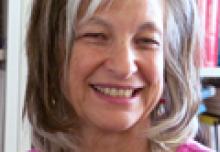The American Heart Association/American Stroke Association has issued its first guideline on adult stroke rehabilitation. Published in the June issue of Stroke, the guideline calls for intensive, multidisciplinary treatment in an inpatient rehabilitation facility.
“Previous guidelines have focused on the medical issues involved in the initial management of stroke, but many people survive a stroke with some level of disability. There is increasing evidence that rehabilitation can have a big impact on the survivors’ quality of life, so the time is right to review the evidence in this complex field and highlight effective and important aspects of rehabilitation,” said Carolee J. Winstein, PhD, PT, lead author of the guideline and Professor of Biokinesiology and Physical Therapy at the University of Southern California in Los Angeles.
Carolee J. Winstein, PhD, PT
The American Stroke Association strongly recommends that stroke patients be treated at an inpatient rehabilitation facility whenever possible, rather than at a skilled nursing facility. While in an inpatient rehabilitation facility, a patient participates in at least three hours of rehabilitation per day with physical therapists, occupational therapists, and speech therapists. Nurses are continuously available, and doctors typically visit daily.
“There is considerable evidence that patients benefit from the team approach in a facility that understands the importance of rehabilitation during the early period after a stroke,” said Dr. Winstein.
According to Dr. Winstein and her coauthors, caregivers should advocate for discharge to an inpatient rehabilitation facility and insist that a stroke survivor not be discharged from the hospital until he or she has participated in a structured program on preventing falls. This program should include education about changes to make the home safer (eg, removing throw rugs and improving lighting), minimizing the fall risk resulting from the side effects of medication, and safely using assistive devices such as wheelchairs, walkers, and canes.
“This recommendation will probably change medical practice. Even the top stroke centers may not have a formal falls-prevention program, but it is very important because a high percentage of patients end up falling after a stroke,” Dr. Winstein said.
The guideline also recommends the following measures:
• Intense mobility-task training after stroke for all survivors with walking limitations to relearn activities such as climbing stairs
• An individually tailored exercise program that allows survivors to safely continue to improve their cardiovascular fitness through proper exercise and physical activity after formal rehabilitation is complete
• An enriched environment (which might include a computer, books, music, and games) to increase engagement and cognitive activities during rehabilitation
• Speech therapy for those with difficulty speaking following a stroke
• Eye exercises for survivors with difficulty focusing on near objects
• A balance training program for survivors with poor balance, or who are at risk for falls.
“For a person to fulfill his or her full potential after stroke, there needs to be a coordinated effort and ongoing communication between a team of professionals, as well as the patient, family, and caregivers,” Dr. Winstein said.


